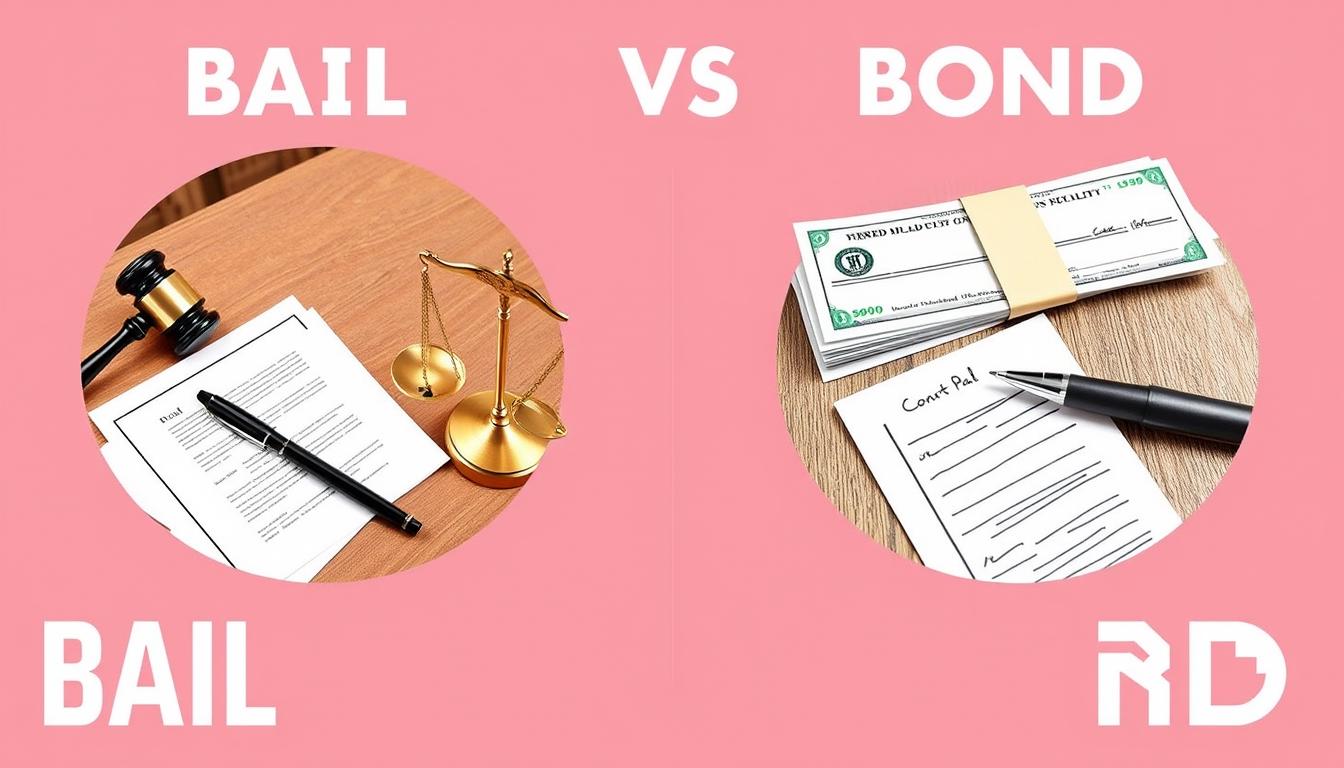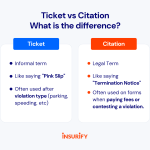Have you ever found yourself confused about the terms “bail” and “bond”? You’re not alone.
Many people use these terms interchangeably without realizing they have distinct meanings and implications. Understanding the difference can be crucial, especially if you or someone you know is facing a legal situation. Imagine knowing exactly what to expect and how to handle it, eliminating the anxiety and confusion that often comes with legal proceedings.
You’ll discover the clear distinctions between bail and bond, empowering you with knowledge that can make a significant difference in navigating the justice system. As you read on, you’ll gain insights that might even help you make informed decisions in critical situations. Are you ready to uncover the facts and dispel the myths? Let’s dive in and clarify the vital differences between bail and bond.
Bail: An Overview
Bail plays a crucial role in the legal system. It provides an opportunity for defendants to remain free while awaiting trial. Understanding bail is important for everyone navigating legal issues. This section explores the concept of bail, its definition, and how it is determined.
Definition And Purpose
Bail refers to the money or property given to the court. Its purpose is to ensure the defendant’s appearance at trial. If the defendant appears, the bail is returned. Bail serves as a guarantee that defendants will attend their court dates.
How Bail Is Set
The judge decides the bail amount. This decision happens during the arraignment. The judge considers several factors before setting bail. The type of crime and the defendant’s history are important considerations. Bail aims to balance the right to freedom and the need for justice.
Factors Influencing Bail Amounts
Several factors affect the bail amount. The severity of the crime plays a major role. Violent crimes often lead to higher bail amounts. The defendant’s criminal record influences the decision. A history of failing to appear in court can increase bail. Community ties and employment status are also considered. Judges aim to ensure defendants return for trial.

Bond: An Overview
When you find yourself or someone close to you in a situation involving jail, the terms “bail” and “bond” start to pop up frequently. It’s crucial to understand these concepts, especially since they can significantly impact the legal process. Let’s dive into the concept of a bond, which is often considered a lifeline for many in such situations.
Definition And Purpose
A bond serves as a promise. It’s an assurance to the court that the accused will return for their trial. It’s like a safety net for the judicial system to ensure that you, or whoever is involved, sticks around for the legal proceedings.
Think of it as a financial pledge. The bond’s purpose is simple: to minimize the risk of someone skipping town before their court date. This mechanism helps maintain order and ensures that justice is served.
Types Of Bonds
Not all bonds are created equal. There are different types, each with its unique features. The most common types include surety bonds, cash bonds, and property bonds.
A surety bond involves a third party, usually a bail bondsman, who pledges the full amount of the bail. Cash bonds require you to pay the full bail amount upfront, while property bonds use your property as collateral.
Choosing the right type depends on your situation. Which one would suit you best if you’re ever in such a bind?
Role Of A Bail Bondsman
A bail bondsman can be your lifeline. They act as the third party in a surety bond, providing the court with a guarantee of the bail amount. This means you only pay a percentage of the bail to them, not the full amount.
Think of them as your ally in navigating the complex bail system. They take on the financial risk and ensure you’re not overwhelmed by the process. They are the bridge between you and the court, making it feasible for many to secure their release.
Have you ever considered how a bail bondsman could change the course of your legal journey?
Understanding bonds can be a game-changer, especially when you’re faced with unexpected legal hurdles. It’s about knowing your options and using them wisely to ensure the best possible outcome. So next time you hear the word “bond,” remember the crucial role it plays in the justice system. Would you know what steps to take if faced with this situation?
Key Differences Between Bail And Bond
Bail and bond often confuse people. They sound similar but differ greatly. Understanding these differences is crucial. It helps individuals navigate legal processes better. The main differences lie in financial implications, risk, and legal consequences.
Financial Implications
Bail is the money paid to secure release from jail. It acts as a security deposit. If the accused attends all court dates, the money returns. Bonds involve a third-party bond company. The accused pays a fee to the company. This fee is usually non-refundable. The bond company then pays the bail amount.
Risk And Responsibility
Paying bail directly involves personal risk. The accused risks losing their own money. A bond shifts the risk to the bond company. The accused might still owe the bond fee. The bond company assumes responsibility for the bail amount. This responsibility includes ensuring the accused attends court.
Legal Consequences
If bail terms are violated, the money is forfeited. The accused might face additional charges. With a bond, the bond company might send a bounty hunter. This happens if the accused skips court. Skipping court can lead to arrest warrants. Legal consequences are severe for both bail and bond violations.

Common Misconceptions
Bail involves paying money to get out of jail temporarily. Bond is a guarantee from a company or person. Both help in releasing someone from custody, but their terms and conditions differ significantly. Understanding these differences can prevent legal confusion.
Understanding the difference between bail and bond can be a bit tricky, especially with so many common misconceptions surrounding these terms. Many people often use them interchangeably, but they are not the same thing. Misunderstanding these terms can lead to confusion and potentially costly mistakes. Let’s clarify some of these misconceptions to help you navigate this complex topic with confidence. ###Bail Vs. Bond Confusion
One of the biggest misconceptions is that bail and bond are the same. Bail is the amount of money you need to pay to get out of jail temporarily. It’s set by the court and acts as a guarantee that you’ll attend your court hearings. On the other hand, a bond is a financial arrangement made through a bail bondsman. The bondsman pays the bail amount, and you pay a fee to the bondsman for this service. This distinction is crucial because it affects how you handle your financial responsibilities during the legal process. ###Role Of Collateral
Another area of confusion is the role of collateral in securing a bond. Many believe collateral is always required, but that’s not true. Collateral is only needed if the bondsman requires it to secure the bond. For instance, if you have a good credit history, a bondsman might not ask for collateral. This flexibility can ease the financial burden on you and your family. It’s essential to discuss this with your bondsman to understand the specific requirements in your situation. ###Refund Policies
Refund policies often trip people up too. Many think they will get their money back regardless of the outcome. However, bail and bond refunds work differently. If you pay bail directly to the court, you get it back after your court appearances, minus any fees or fines. Conversely, the fee you pay a bondsman for a bond is non-refundable. It’s the cost of their service. This is a critical point because it affects your financial planning and expectations. Have you ever wondered how these misconceptions might affect your decisions? Understanding these differences can save you time and money, and reduce stress during an already challenging time.Legal Rights And Considerations
Bail and bond both involve temporary release from jail, but differ in payment methods and guarantees. Bail requires full payment upfront, while bond involves a bail bondsman and a fee. Both ensure the accused returns for court dates.
When navigating the complex world of bail and bond, understanding your legal rights and considerations is crucial. These terms often get mixed up, but knowing the distinction can make a significant difference in how your case progresses. This knowledge empowers you to make informed decisions, ensuring fair treatment under the law.Rights Of The Accused
As the accused, you have fundamental rights that need protection. Bail and bond exist to uphold your right to liberty until proven guilty. These rights ensure you aren’t detained for prolonged periods without justification. Consider the presumption of innocence—a key principle in legal systems worldwide. You have the right to a fair trial, and bail or bond facilitates this by allowing you to prepare for court proceedings outside of jail. It’s about balancing the need for justice with respect for your personal freedom.Judicial Discretion
Judicial discretion plays a pivotal role in determining bail and bond. Judges assess various factors like the severity of the crime, your criminal history, and flight risk. It’s not a one-size-fits-all approach. Have you ever wondered why two people with similar charges might face different bail amounts? It’s because judges weigh each case individually, considering unique circumstances. This discretion allows for flexibility but can also lead to unpredictability. Knowing this, you can better prepare for potential outcomes.Impact On Legal Proceedings
The decision between bail and bond can significantly impact your legal journey. Opting for bail means paying a set amount directly to the court, while a bond involves a third party—typically a bondsman. Each choice comes with distinct ramifications. Choosing bail might seem straightforward, but what if you can’t afford it? This is where bonds become crucial, offering an alternative yet introducing conditions like regular check-ins or restrictions. These choices can affect your ability to focus on your defense, influencing the overall trajectory of your case. Have you thought about how this decision affects your daily life? Understanding these nuances can help you navigate the legal system more effectively, ensuring your rights are upheld while preparing for trial.
Case Studies And Examples
Bail refers to the money paid to ensure a defendant returns for trial, while bond involves a third party guaranteeing payment. Understanding these terms helps in legal contexts and financial commitments. Both aim to secure compliance but differ in handling and obligations.
Understanding the difference between bail and bond can be complex. Real-world examples help clarify these concepts. By examining various case studies, you can see how bail and bond operate differently in practice. Let’s look into some real-life scenarios, high-profile cases, and the lessons learned from them.Real-life Scenarios
Consider a small-town individual arrested for a minor offense. A judge sets bail at $500. If the person or their family pays this amount directly to the court, they are released until their court date. This is a straightforward case of bail. Now, imagine another scenario where the bail is set at $10,000, an amount the family cannot afford. Here, a bond comes into play. The family approaches a bail bondsman, paying a non-refundable fee, usually 10% of the bail amount. The bondsman then secures the release by paying the full bail amount, ensuring the accused appears in court.High-profile Cases
The cases of celebrities often highlight the nuances of bail and bond. Take the example of a famous actor arrested for a serious charge. Their bail might be set at $1 million due to their high flight risk. In such cases, a bond is typically the route taken. A bond company posts bail on behalf of the actor, charging a hefty fee. This ensures their temporary freedom while the legal process unfolds. These high-profile cases show how bail and bond mechanisms ensure accountability, even when dealing with individuals who have substantial resources.Lessons Learned
Examining these cases reveals key insights. First, bail and bond serve the same purpose: ensuring attendance in court. Yet, they cater to different financial capabilities. Bail is direct payment, while a bond involves a third-party guarantor. Second, the importance of understanding the terms and conditions of a bond cannot be overstated. Failure to appear in court can lead to severe consequences, including arrest warrants and additional fines. Lastly, these examples remind us that while the legal system offers avenues for temporary freedom, adhering to its rules is crucial. What would you do if faced with the decision to choose between bail and bond? Understanding the mechanics can empower you to make informed choices in challenging situations.Frequently Asked Questions
What Is The Purpose Of Bail?
Bail ensures a defendant’s appearance in court by temporarily releasing them from custody. It acts as a financial guarantee. If the defendant attends all required court proceedings, the bail amount is returned. This system allows individuals to prepare for their court case without being held in jail.
How Does A Bond Work?
A bond is a promise made by a bonding agency to pay the bail if the defendant fails to appear in court. The defendant pays a percentage of the bail amount to the bond company. If they attend all court hearings, the bond agency keeps the fee, but the bail amount is not forfeited.
Can Bail And Bond Be Denied?
Yes, bail or bond can be denied if the defendant poses a flight risk or is a danger to the community. The judge considers the severity of the crime, the defendant’s criminal history, and potential risk factors before making a decision.
What Factors Influence Bail Amounts?
Bail amounts depend on the crime’s severity, the defendant’s criminal history, and flight risk. Judges consider these factors to set bail. The goal is to ensure the defendant appears in court while allowing them to remain free until trial.
Conclusion
Understanding bail and bond is important for legal awareness. Both terms help people temporarily leave jail. Bail is money paid to secure release. A bond involves a third party’s guarantee. Knowing the difference can aid in making informed decisions. It’s crucial for navigating the legal system.
Always consult a legal expert for advice. This ensures you make the best choice. Being informed keeps you prepared. Remember, knowledge is key in legal matters. Stay informed and make wise decisions.

I’m someone who’s always been fascinated by how small differences can lead to big understanding. That’s why I love writing “What’s the difference between…” content; it helps me explore topics from multiple angles and explain them in a clear, practical way. Whether it’s tech, productivity, business, or everyday decisions, I enjoy making complex ideas easier to compare, understand, and act on.










